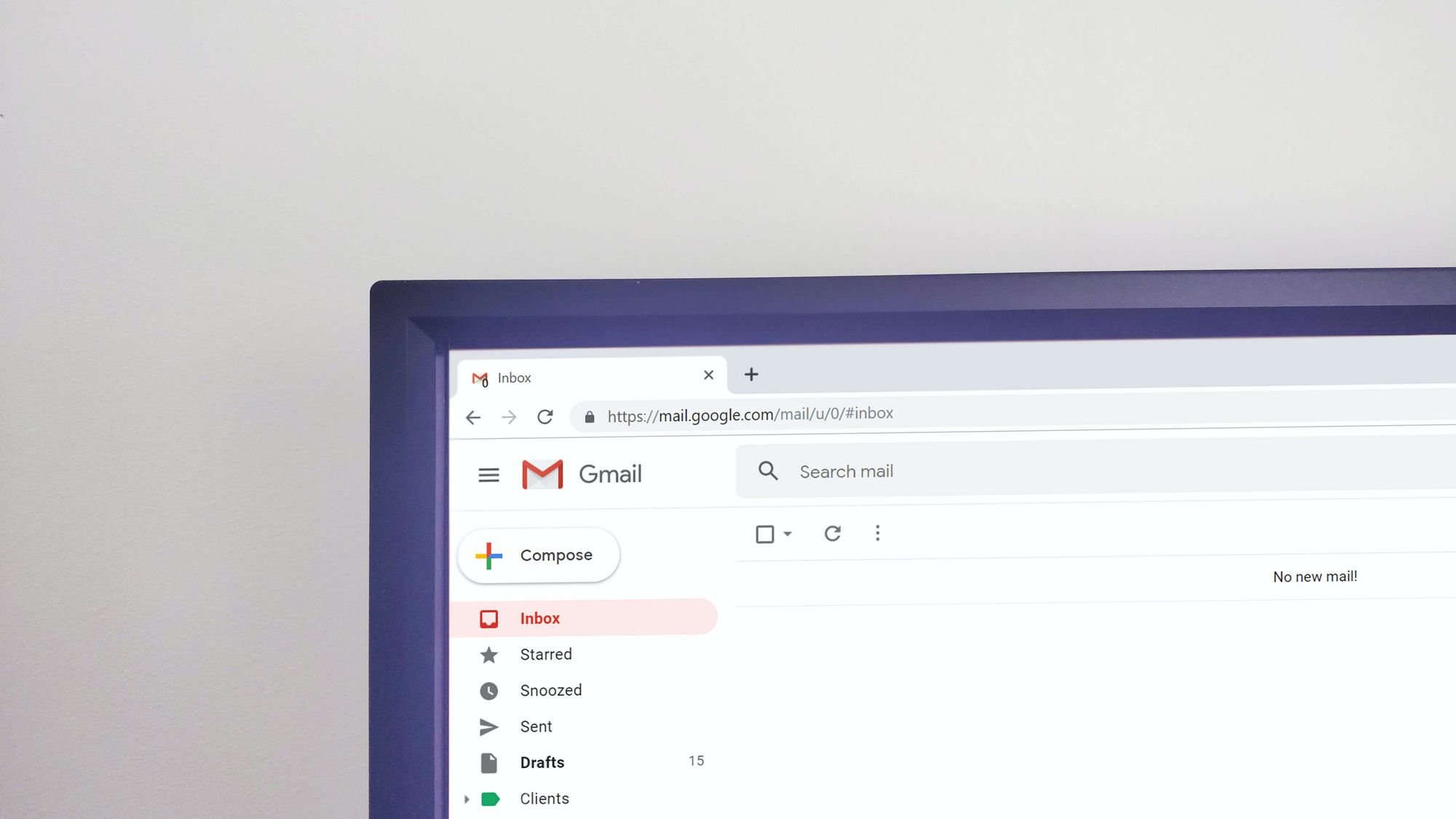This talk was originally a panel discussion at the B2B Marketing Festival.
Amy Hanan: Hi, I'm Amy Hanan, CMO at LRN. LRN is an ethics and compliance e-learning SaaS and advisory company. I've been in my role with LRN for about a year and a half, but I have nearly 20 years of B2B marketing experience, primarily within mid-market-sized companies in the legal, financial services, and tech-related industries.
I'm really happy to be in conversation today with Dan. Dan, maybe you can take a moment to introduce yourself.
Daniel Frohnen: I’d love to. I’m Dan Frohnen and I'm CMO at a company called UpKeep. We provide a management tool for asset-intensive industries to manage their assets. I've been a CMO for 10-plus years now.
Marketing technology has become a second language to me and Amy, and we want to talk about how to unlock your marketing technology’s potential because there are so many nuances and different ways to go about it.
Amy, how about I kick off with a question?
Amy Hanan: Let's do it.
How technology has transformed marketing
Daniel Frohnen: When you and I started in marketing, it was a lot different than it is now. From your vantage point, how has new tech transformed your marketing processes over the years?
Amy Hanan: Not to date myself too much, but when I was starting out in my marketing career, social media had just launched. Over the last 10 years, the pace of change in marketing technology has been explosive. Last week, I got the updated martech map from Scott Brinker, which now has nearly 10,000 different pieces of tech. To say that it’s has transformed our discipline is an understatement. It's touched every single one of our processes, top to bottom.
Now, when I’m thinking about introducing a new piece of technology into our existing stack or processes, I take a step back and really think about these questions:
- What goals are we looking to achieve?
- How are we defining success in the achievement of those goals?
- How does marketing directly contribute to that?
- Can this piece of technology help us get to that success faster or more efficiently?
- How will this piece of technology integrate into our workflow?
How about you, Dan?
Daniel Frohnen: You made me think back to about 15 years ago. I was working in a company that did a ton of field events – like 300 a year. Our biggest challenge was that when we went out to get all these names, they didn't go into the database by themselves – they just sat in a pile, but the faster you could get them into the database and follow up, the more impact marketing would have to unlock the value of going out and getting those names in the first place.
Today, martech has transformed the journey into the one that every marketer wants for their customers and prospects, which is seamless.

Choosing the right MarTech solution
Amy Hanan: Since we're talking about a landscape of nearly 10,000 different choices, how do you know what's the right solution for you?
Daniel Frohnen: I remember, and I'm sure you do too, when that martech map was really small, and then it got bigger and bigger and bigger and bigger. At this point, I choose based on what I've used in the past because there are some pretty mature solutions out there. I also like to at least try new technology on the side just to keep up with the times.
At the end of the day, though, my tech stack has looked different at every company I've ever been at – it's highly dependent on what the go-to-market motion looks like, what the marketing mix is, and what’s already in place.
I'm not a believer in buying tools for the sake of buying tools, so if there's already a stack in place, it doesn't make sense to rip it out and replace it just because it's got to be my way. When I select tools, it's based on the needs of the business.
I’m also looking for the tools that are best in breed. I think sites like G2 and TrustRadius make it so easy for us to understand what people think about a tool and what value they're deriving from it. Getting that validation from our peers is huge.
The big thing that I would call out about any technology selection is that unless you’ve figured out the strategy that you want to put a tool on top of and scale, you're better off not buying the tool. Putting the platform there when you don't have the strategy in place isn't going to cut it. You have to start with the strategy and the “why”.
Amy, how do you choose in that sea of logos?
Amy Hanan: I do something similar. I take a look at the new piece of technology that we're evaluating to see if it offers any unique capabilities or functionalities that aren't replicated by any other piece of tech that we already have.
If there is something completely unique there, I have a conversation with all the other key stakeholders to identify the use cases and how we would best leverage that unique capability across all the go-to-market functions – not just marketing, but our revenue operations team, our various sales teams, our client success team, and so on. There could even be some interesting use cases within the product team.
Once I've identified something unique, I try to gather as many new case studies as possible before making that decision. That’s all in addition to the work that you've already mentioned.

How to keep up to date with your existing tech stack
Daniel Frohnen: A wise rapper once said, “More money, more problems”. More technology, more problems, right? How do you keep track of all these systems? They may be releasing something new that breaks something else. It’s a challenge just to harness the full capabilities of what you're buying. How do you manage a tech stack that’s designed to be bigger than just a system?
Amy Hanan: How you unlock value from your marketing technology is such a broad topic that it can take you down many different paths, but I feel strongly about getting more value out of your existing tools and stack by, as you said, Dan, staying on top of it. There are new features, enhancements, and capabilities being released every single month, every month in a lot of the tools that you likely already have.
When a tool is first selected and implemented, it's almost like a snapshot in time of what your team is going to be able to do with it. You implement it for the use cases that you identify in your evaluation process, and it's hard to expand beyond that after the initial implementation.
You need to continue the education process with the tools you're bringing in and the tools you already have within your stack.
Here are a few tactical things that I think about or that I've implemented with my team here at LRN:
- Ensuring that there's somebody or a set of somebodies responsible for staying up to date with tech updates
- Having regular check-ins with the CSMs for the tools that we have
- Participating in user groups – for instance, we use HubSpot at LRN, and HubSpot has many user groups that meet regularly and provide a wealth of knowledge and real-world scenarios for how people are using various HubSpot tools. It’s a great way to pick up best practices and learn about unique use cases.
- Hosting regular training days for the team, where everybody gets certified for a particular technology or its updates
- Adding updates to the marketing roadmap
- Baking this continued education into the team's annual performance evaluation
Daniel Frohnen: I agree with everything you said, and the thing I love most is making it a part of the team’s performance plan.
One thing I would add is that I've been leveraging an agency called CS2 for the better part of eight years, and I think having a strategic partner with a bird's eye view of the landscape is always a good thing if you can fit it into your marketing budget.
Another thing that I would say is that broken systems are worse than no systems at all. If your tools are starting to conflict with each other, and you find yourself locking audiences out because there's a rule that's telling them to do this, but they can't because of that, then you're killing your marketing.
Not too long ago, we were having what I thought was a big month for web traffic, but we weren't seeing the conversions happen or the net new leads that I was expecting. We were testing, testing, and testing, but I couldn't put my finger on why this was happening.
At the end of the month, very deep in the system, I found a broken integration point where someone in a past iteration of the marketing team had developed a very cool zap – you need to check zaps pretty much monthly. Lo and behold, a few zaps had broken, and that was the problem and solution all in one. It's those little things. Knowing your system and how to check its health regularly is absolutely critical.

Must-have martech tools
Daniel Frohnen: What tools are the absolute musts in your tech stack, the tools that you cannot live without?
Amy Hanan: There are so many dependencies when it comes to choosing tools. What type of business are you operating? What's your business model? What's your go-to-market strategy? What's the maturity of your business? What’s the maturity of your marketing team? There's a lot to consider.
I can, however, share a couple of pieces of technology that I use in my current role. I already mentioned HubSpot – I'm a big fan of it and have been a pretty serious HubSpot user for the last five years now.
I’ve used other marketing automation platforms in the past, from Marketo to Pardot to Salesforce Marketing Cloud, and a couple of others, but what I prefer about HubSpot is the ease of use for non-technical users. People on my marketing team that are not coders or developers can develop templates for emails, landing pages, and even web pages in quick order to support campaigns. That’s been very helpful.
Beyond that, HubSpot’s sales tools can run integrated multi-touch sales sequences and they offer ease of use for the non-technical users on our sales teams as well. We use a lot of the different HubSpot hubs throughout our organization. It’s the linchpin piece of tech in our marketing stack right now, with lots of other offshoots from that.
Daniel Frohnen: I've never used HubSpot, but it sounds really powerful.
For my answer to this question, let’s say I’m running a B2B motion with some sort of BDR or SDR. Data is critical, right? From an accounts standpoint, you need to know what your addressable database is, and you need to be able to access your leads and contacts. A marketing automation platform for that, whether it's part of your CRM package or not, is critical.
I also think email is still the lifeblood of an engagement program, for better or for worse. We thought it was going to die, but it never did.
And then a sales engagement platform, whether it's a module or something like Salesloft or Outreach, is pretty critical. It's the best way for marketing to collaborate with sales on multi-touch attribution and make sure everyone’s getting the messaging. That’s vital because a lot of times sales are the first touch in the customer or prospect’s journey.
You could go out and get Chorus or Gong too, but I think it’s best to leave that until you're a little more scaled and you're listening for competitive intelligence and win-loss. The table stakes stuff is the data and how you engage with your audiences from a multi-touch standpoint.
Amy Hanan: I absolutely agree with you on the data point. We currently use both ZoomInfo and Seamless.AI for data enrichment, and I’m very excited to be launching a new intent data pilot program with my demand gen team using data from Bombora.

How to get cross-functional adoption of new tools
Daniel Frohnen: A question that’s critically important to this conversation is how do you get adoption? A lot of times marketing will go out and procure the software or create the perfect journey, but then we're highly dependent on our sales and customer success counterparts to leverage the technology and use it as intended. Without that, it’s dead in the water, so how do you get that buy-in?
Amy Hanan: I go back to the beginning to review the goals and how this new tool aligns with them. Then I go to the stakeholders and see what new or different use cases they may have and make sure I understand their pain points.
We regularly hear from stakeholders within our company that a process feels too complicated or it gets confusing because there are too many clicks to get to the end action. Whatever new piece I'm adding is to ease those pain points.
Then I can go back to our sales team (in B2B, or at least in my world, marketing is all in service of our sales team) and show them how this tool is going to make their lives easier and help them be more efficient. I tie this directly to their ability to generate more pipeline, and that creates seeds of buy-in that I can continue to grow through the implementation process.
It’s so important to get that buy-in because it makes it much more likely that the end users will adopt the tool. You’ve got to get them hyped and reiterate over and over again how the solution is going to help.
You can do a little roadshow, attend sales meetings, and get them excited about what's to come. You can even have a town hall or some kind of all-hands meeting where you get people hyped. You might want to leverage your internal communications channels to tell the story in advance.
Another tactic that you could take, similar to the one I mentioned earlier, is baking technology adoption into your team’s objectives. This works especially well if the goals relate to activities you need team members to take to ensure that you’re getting the most value out of all of the technology.
Daniel Frohnen: I love that. Something else I've done in the past that has worked pretty well is making other stakeholders part of the buying committee. When you're looking at technology, first you need to get the highest level of alignment from the CRO or the VP of sales, then you can get someone into that buying committee to understand the tool and be your champion.
The other piece that works well for me is having a demand gen and BDR crew that comes together regularly to look at messaging and strategies and see what's working and what's not. They’re constantly playing with the technology they have to make it as successful as possible. That’s huge, right? They're at the table, making technology work better for them, rather than thinking that marketing's going to magically do it. That works so much better.
Amy Hanan: I love that idea. It’s almost like having a little innovation lab going on internally, and you get to share those success stories and the new and interesting ways people have been using the tech to get to their goals.






